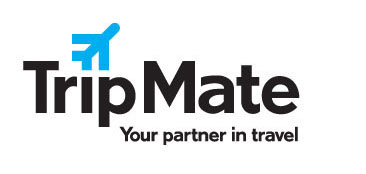Tourism in Nepal More Important Than Ever
KANSAS CITY, MO May 4, 2015 – The scene in Nepal is devastating. A 7.8 magnitude earthquake and over 70 aftershocks have caused unspeakable destruction throughout the country, claiming over 6,000 lives. Many are still missing and the death toll is expected to rise.
The geography of the Asian nation impedes relief efforts, as some mountain villages are completely cut off. Landslides of what were already precarious routes mixed with debris and rubble makes access difficult for many victims in need. Constant rain compounds these challenges, and many citizens are protesting that aid hasn’t come quickly enough.
Reports continue to surface about people being saved from collapsed buildings or helicopters reaching remote villages in need of evacuation. Many organizations are providing aid on the ground, along with contributions from other governments. Nepal has specifically asked for more helicopters to evacuate victims.
For tourists, travel insurance is often the primary resource during such a disaster.
“Our first priority is their wellbeing.” said Brad Finkle, President of Trip Mate, a leader in the travel insurance industry since 1989. “Our 24 hour emergency assistance service has been deeply involved in coordinating evacuations, arranging medical treatment, and getting travelers to safety.”
Tourism is a primary industry in Nepal, furthering the long term damage caused by this earthquake. Though Mt. Everest is expected to be open again for climbers in about a week, the international airport at Katmandu is overwhelmed at present. There is no timeline for full recovery; the impact of this level of devastation could last decades.
Mike Rea is CEO of Tourism Cares, a non- profit organization dedicated to philanthropy through travel. Tourism Cares protects and restores destinations, and provides support recovering from disasters, recognizing the impact of the tourism industry on many economies around the world. Rea offers advice for those looking to donate, “Consider diversifying your donation, just like you would investments. Yes, give to the Red Cross, Mercy Corps, or CARE, but also donate to local Nepalese relief organizations.”
Donating to different relief organizations allows more specialized aid to a larger variety of the population. Don’t worry, most people aren’t familiar with local philanthropies in Nepal, but organizations like GlobalGiving.org and Give2Asia.org specialize in matching donations with recipients.
Another step to diversify the donation is to wait, “Save some of what you would donate until six months from now. The situation will be very different, and your donation will still be needed.” Rea adds.
With an instant gratification society, it is easy to see how this is sage advice. Once a disaster is out of the spotlight, many won’t think to donate. A financial boost in six months would greatly assist recovery.
Nepal’s long term economic recovery is why the Tourism Cares Nepal Recovery Fund was established. In 2013, tourism accounted for 8.2% of GDP (allowing for direct and indirect affects), according to the World Tourism and Travel Council. This fund will go directly to strategies for revitalizing Nepal’s tourism product and marketing, from targeted restoration and physical investments, to training and recovery funding for industry professionals. Donations are tax deductible, 100% of each donation is allocated to program expenses, and Tourism Cares is waiving all indirect administrative costs.
Rea also emphasizes recovery after the initial relief, “Our focus is on recovery, the long term healing for Nepal. We are working with the business community, local operators, and media to encourage and facilitate tourism in Nepal.”
Brad Finkle, who is also Chairman of the Board for Tourism Cares, echoes the importance of tourism to Nepal, “One of the best ways to help Nepal is to travel there. Keep your plans, but adjust your outlook and expectations; you can make a difference for Nepal.”
Of course, a trip planned in the next week or month likely needs to be put on hold, but don’t completely rule out Nepal as a destination. Travel there for the experience, travel there to help.
Mike Rea, who was actively involved with the Tsunami recovery in Sri Lanka, delivers an uplifting message for the future, “Somewhere in this is hope. There were stories of poverty and corruption before, only made worse by this disaster. Whether optimistic or grounded in experience, there is hope for building back better. Sri Lanka has rebounded; there is peace, a strengthening economy, and tourism has recovered. The tsunami was part of that. There are millions of people who never heard of Nepal that are now thinking about Nepal. Generosity and awareness may lead to special things.”
ABOUT TRIP MATE
Trip Mate is the partner that leading travel professionals turn to for high-quality travel protection products and services for the traveling public. In addition to offering industry leading travel insurance plans, Trip Mate provides administrative services for claims, product design and underwriting, while helping customers with our state-of-the-art claims handling. Please visit www.tripmate.com for more information.
ABOUT TOURISM CARES
Tourism Cares preserves and enhances the travel experience for future generations. Tourism Cares channels the philanthropic passion and commitment of the travel industry to protect and restore valuable destinations—and to support those destinations as engines for prosperity, civil society, and pride in their communities. The domestic programs focus on industry-wide volunteer events, capacity building for the nonprofit stewards of tourism sites, and scholarships and mentoring to support a talented workforce. Global efforts include corporate social responsibility partnerships, strategic investments, and advocacy and education across the travel industry. More information is available at www.tourismcares.org.
AVAILABLE TOPIC EXPERT
Joshua Walker
jwalker@tripmate.com
816-813-6574

